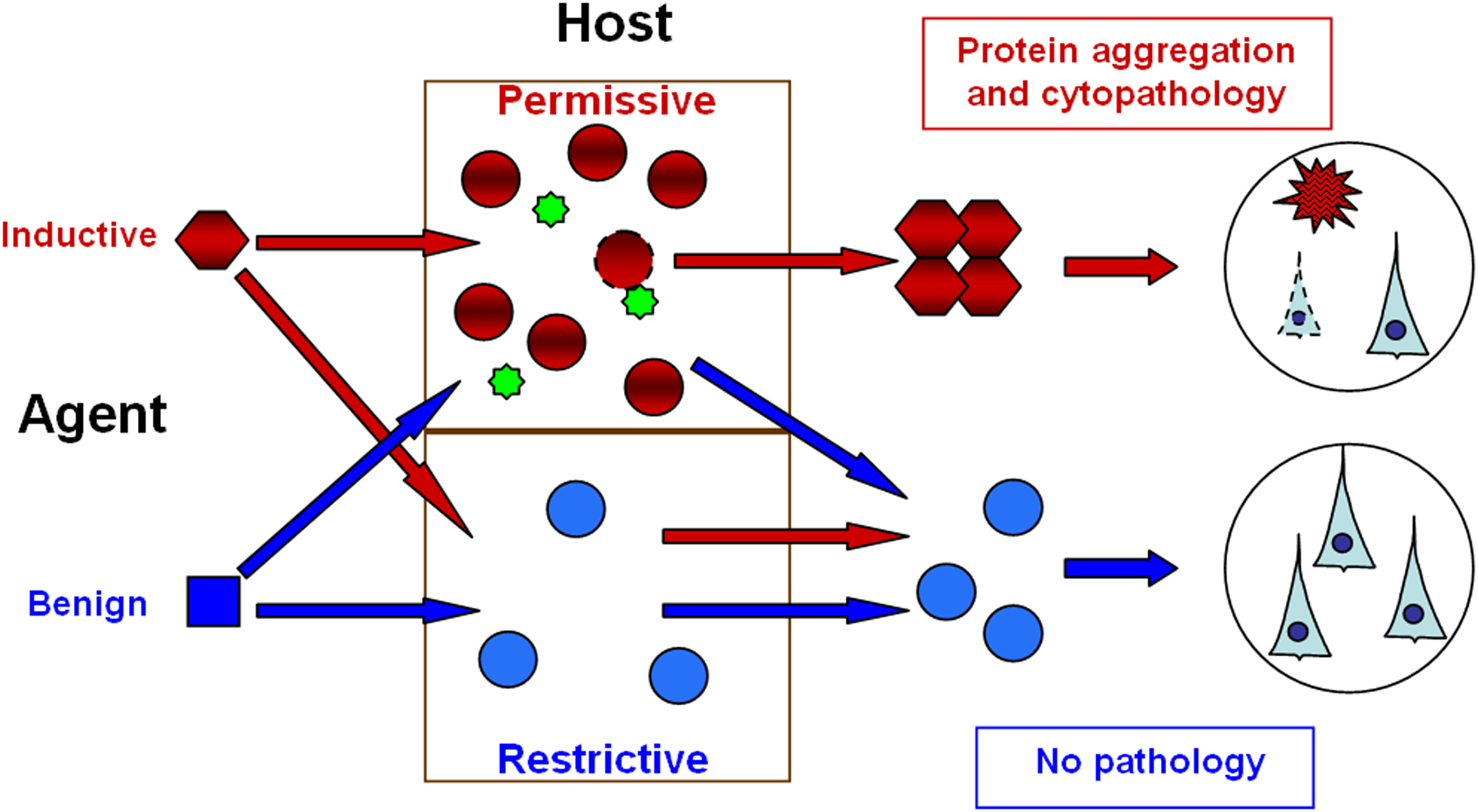Figure 3.

The interaction between the agent and host in the induction of disease by a proteopathic agent. By definition, a benign protein (blue square) is incapable of transmitting disease. An inductive agent (red hexagon) is pathogenic only in the context of a permissive environment (top). Such environments might include: A configuration of the cognate protein that is conducive to templating (red circles); increased production or sequestration of the cognate protein by the host; and/or the presence of essential cofactor(s) (green stars). A restrictive host environment, by contrast, might consist of a protein configuration that is resistant to templating (blue circles, bottom), sub-optimal protein levels, and/or the absence of cofactors. The role of soluble oligomeric species in seeding-induced aggregation and cytopathology remains to be defined.
